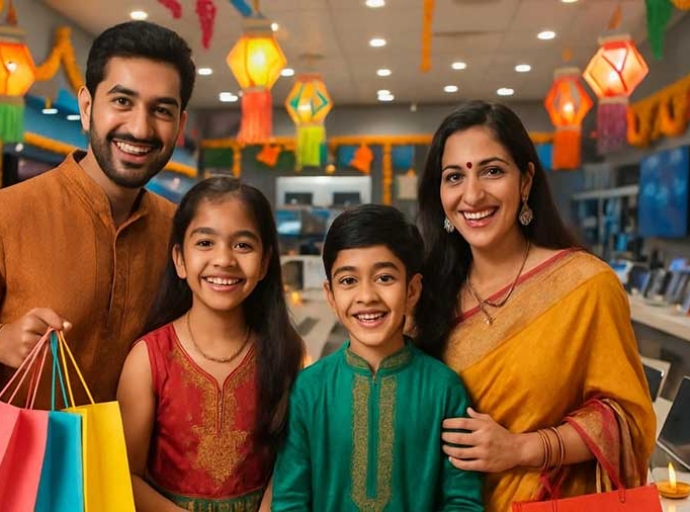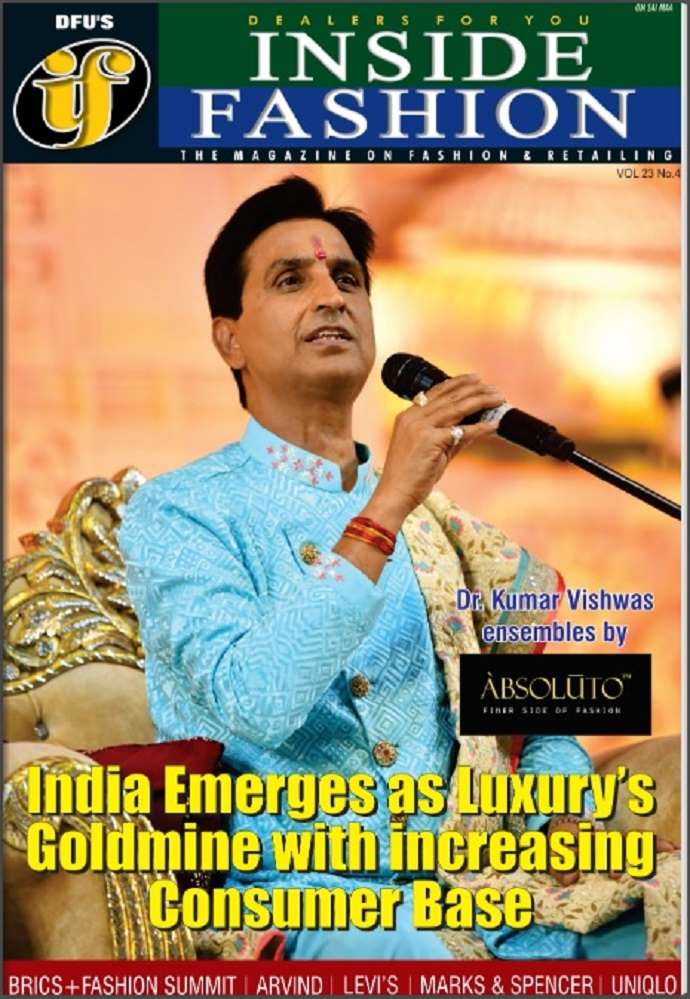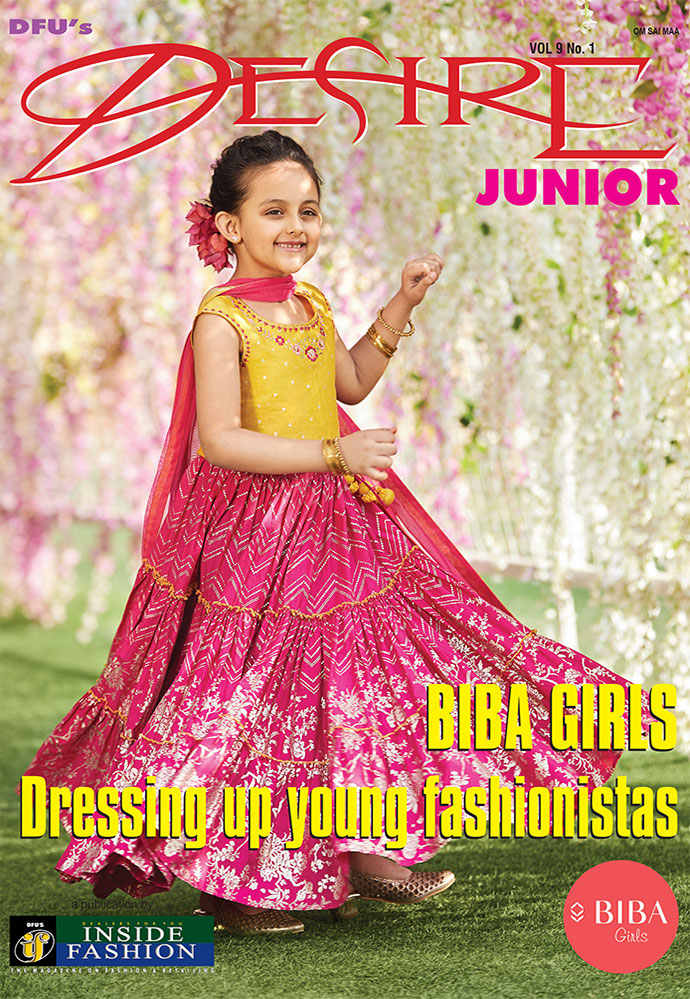23 October 2025, Mumbai
In India, few garments carry as much cultural gravitas or commercial promise as the sari. Draped in six to nine yards of fabric and centuries of heritage, it remains a cornerstone of Indian identity. Yet today, this timeless clothing is being redefined by shifting lifestyles, digital commerce, and a new generation of women who want the elegance of tradition without the constraints of convention.
Industry estimates reveal, India’s sari market is poised to cross Rs 62,000 crore by FY25, growing at an annual rate of 5-7 per cent. But this isn’t just growth it’s reinvention. From AI-powered retail to the meteoric rise of ready-to-drape designs, the sari industry is undergoing one of the most dynamic transformations in its history.
Ready-to-drape takes the lead
The most visible and revolutionary shift in recent years is the rise of the ready-to-drape sari, also known as the pre-stitched or one-minute sari. Long viewed as elegant but time-consuming, the sari has often been perceived by younger women as cumbersome. Ready-to-drape versions have eliminated that barrier. These garments come pre-pleated, pre-tucked, and even pre-pallu’d, allowing wearers to slip into them as easily as a skirt. And the impact is profound.
Speed and wase: It takes under a minute to wear, appealing to time-pressed professionals and young consumers.
Democratization of ethnic wear: Millennials and Gen Z, who value convenience but crave authenticity, are embracing the sari again.
Designer-led innovation: High-end designers like Tarun Tahiliani and Anita Dongre have launched luxury pre-draped lines that blend couture craftsmanship with modern comfort.
Market momentum: This category is now growing faster than traditional saris, at an 8-10 per cent annual clip, primarily driven by urban and metro markets.
The ready-to-drape sari doesn’t threaten the traditional drape it complements it. For many women, it’s a gateway to reconnect with heritage in a format that fits modern life.
While convenience drives innovation, heritage remains the heart of the sari ecosystem. Across India, regional sari traditions continue to thrive. The Kanjivarams from Tamil Nadu, Banarasis from Uttar Pradesh, Paithanis from Maharashtra, Balucharis from Bengal, and Sambalpuris from Odisha, each tells a story of region, ritual, and craftsmanship. These handloom treasures support millions of artisans and sustain a critical segment of India’s textile economy. Globally, Indian handloom saris are exported to over 70 countries, positioning India as the world leader in sari exports. Moreover, the emotional and cultural value of these drapes ensures that the heritage segment remains resilient even amid digital disruption.
Fabrics, finishes, and the fusion era
While silk and cotton continue to dominate, the sari is also embracing a material evolution. Lightweight fabrics like organza, chiffon, and tissue silk, colloquially dubbed ‘Jimmy Choo’ fabric by consumers for its luxurious sheen are gaining traction. Simultaneously, net and sequin saris have become staples for festive and evening wear, often paired with bold, corset blouses that bring in global fashion influences. This fusion of fabrics and styles mirrors the broader consumer trend: women who want both tradition and trend, often in the same outfit.
Historically, the sari market was highly fragmented, dominated by small retailers and unorganized players. Today, it is steadily moving towards an organized, brand-driven model. This is due to numerous reasons. Branded players offer quality assurance, standardization, and authenticity certificates especially critical for premium silks and that ensures consumer’s trust. E-commerce meanwhile has given sari brands a national and global reach, levelling the playing field for regional labels. Leading brands are integrating physical and online touchpoints to create seamless shopping journeys.
Table: The Indian sari market
|
Quadrant |
Some brands |
Characteristics & business model |
|
Premium Designer |
Sabyasachi, Masaba, Tarun Tahiliani, Anju Modi |
Known for haute couture, intricate craftsmanship (zardozi, embroidery), and high-end materials. Caters to celebrities, bridal wear, and luxury segments. Often have a strategic presence in other categories like jewelry. |
|
Affordable Designer |
Sudathi, Masaba (diffusion lines), Anouk, Jaypore |
Focus on offering designer-inspired looks at a more accessible price point. Utilizes modern prints, synthetic fabrics, and contemporary silhouettes. Brands leverage a strong online presence and often collaborate with artisans. |
|
Premium Mass |
Nalli, Taneira, Pothys, Kanjivaram |
Traditional, heritage brands with a strong retail presence. Known for authentic, high-quality traditional sarees (silk, handloom) and a loyal customer base. They are now actively expanding their digital footprint and modernizing their customer experience. |
|
Affordable Mass |
Dressfolk, Biba, Meena Bazaar, Fabindia |
Brands that offer a wide range of basic and semi-formal sarees. Focus on accessibility, a variety of fabrics (cotton, blended synthetics), and modern prints. They have a strong presence in both physical retail and online marketplaces like Myntra and Flipkart. |
Adaptation in action
Nalli, blending legacy with technology: A big brand since 1928, Nalli has embraced e-commerce with precision. Through visual AI integrations, it now manages an online catalog of over 15,000 saris, improving discoverability and conversion rates. Its tech-first approach has modernized a century-old legacy.
Sabyasachi & Masaba: Building lifestyle ecosystems: Designer powerhouses Sabyasachi Mukherjee and Masaba Gupta are transforming their labels into multi-category lifestyle empires spanning jewelry, beauty, and home décor. Their success lies in expanding the sari’s cultural aura into a holistic brand experience.
Suta & Deepam Silks, the digital growth story: Emerging labels like Suta have scaled rapidly through organic digital marketing and SEO optimization, while heritage names like Deepam Silks are leveraging content-driven storytelling to reach younger audiences online.
Where heritage meets the future
The sari’s enduring power lies in its adaptability. Whether handwoven in Banaras or algorithmically curated online, it continues to embody the dual essence of Indian fashion: heritage and reinvention. As India’s fashion economy evolves, the sari remains both symbol and strategy a garment that bridges generations, geographies, and growth models. In the words of a leading retail analyst, “The sari is not just surviving it’s scaling.”





































